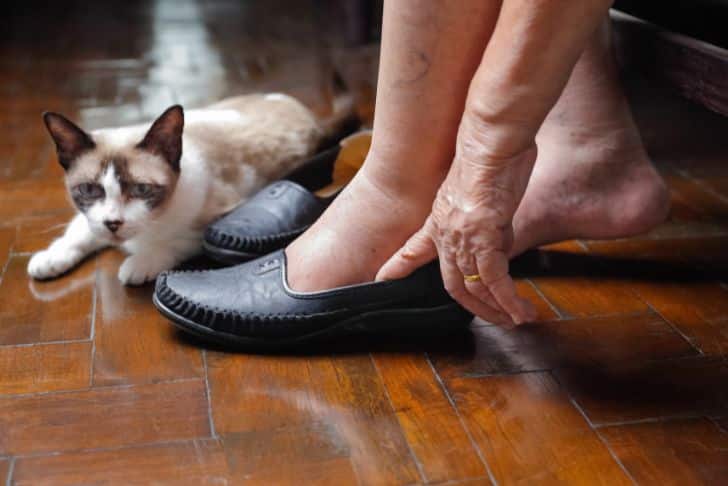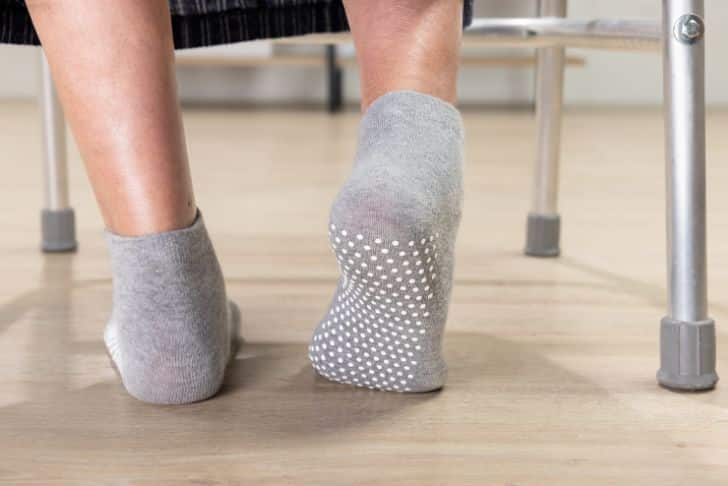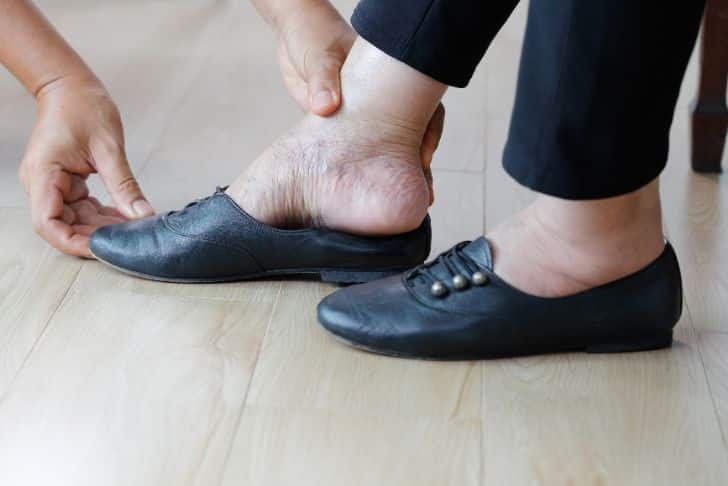As you age, becoming vigilant about fall prevention goes hand-in-hand with maintaining your health and independence. This article discusses the significance of discussing your risks and previous incidents related to falls with your health care provider. Harnessing the power of regular physical activities to improve your strength, balance, and flexibility could be a potential game-changer in preventing falls. Equally, opting for the right footwear—sturdy, well-fitted, and flat shoes with nonskid soles—could greatly diminish your risk of slips and falls. It also sheds light on the importance of decluttering your living space by eliminating threats like boxes, cords, and loose rugs.
And not to forget, keeping your home well-lit and using safety equipment can also lend an extra layer of protection against falls. Furthermore, the intervention of an occupational therapist can curate a more personalized fall prevention strategy for you by pinpointing areas in your home that need improvement. It’s time to realize an investment in fall prevention means investing in personal independence!
The Importance of Fall Prevention
As time goes on, you may notice physical changes or health conditions that make you more susceptible to falls. Given the potential consequences of such accidents, ensuring your safety becomes increasingly crucial.
Understanding the consequences of falls
Falls can lead to severe outcomes, harming your ability to maintain independence and carry out daily tasks. When older adults fall, they risk incurring injuries like fractures and head traumas. Falls can also generate anxiety and fear, prompting you to limit your activities. This decrease in physical activity can subsequently lead to further decline in your health and overall wellbeing.
Highlighting the importance of fall prevention as you age
As you age, your risk of falls increases due to factors like changes in physical health, decreased muscle strength, and the use of certain medications. Fall prevention is, therefore, paramount. Simple measures can greatly reduce your fall risk and maintain your independence and quality of life.
Assessing the individual risk of falls with healthcare providers
It’s highly recommended to discuss your risk of falls with your healthcare provider. These conversations can help you understand your individual risk factors and develop appropriate strategies to prevent falls. They can also review your medications to reduce side effects and interactions that might lead to falls.
Role of Physical Activity in Fall Prevention
Physical activity plays a key role in preventing falls. Engaging in regular exercise can help improve not only your overall health but also mitigate the risk of falls.
Improvement of strength through regular exercise
Regular exercise helps maintain or improve your muscle strength. Strong muscles are essential to support your body and keep you upright, helping to prevent falls.
Improvement of balance and coordination
Exercises that focus on balance and coordination can significantly decrease the risk of falls. These exercises teach your body how to control and maintain your position, whether you’re moving or remaining still.
Enhancement of flexibility
Flexibility exercises can improve your agility, creating better movement in your muscles and joints. This enhanced flexibility reduces the likelihood of falling.
Discussion of recommended types of exercises
The types of exercises recommended for fall prevention include strength and balance training, aerobic activities, and routines that improve flexibility. Further advice on suitable exercise routines should be sought from healthcare professionals.

The Impact of Proper Footwear on Fall Prevention
The type of footwear you choose can significantly impact your risk of falls.
Need for strong, flat shoes
Strong, flat shoes provide better support compared to high-heeled or floppy shoes. They ensure a more secure footing, reducing the chance of slipping or twisting your ankle.
Importance of nonskid soles
Shoes with nonskid soles help to prevent you from slipping on different surfaces. This feature is particularly useful on wet or polished floors.
Role of properly fitting shoes
Properly fitting shoes provide necessary comfort while supporting your feet and reducing foot pain. Shoes that are too big can make you trip, while too tight shoes can cause discomfort and balance problems.
Benefits of specialized footwear for different activities
Specialized footwear is designed to provide additional support for various activities. For instance, using sturdy boots for hiking or running shoes for jogging can prevent falls associated with these activities.
Potential Home Hazards and Fall Prevention
Addressing potential hazards in your home is a critical step towards preventing falls.
The risk posed by loose cords, boxes, and rugs
Loose cords, boxes, clutter, and rugs can cause tripping. It’s safer to tie-up cords or remove rugs and keep your paths clear of boxes.
Dangers of excess clutter and its role in falls
Excess clutter can also increase tripping hazards, particularly in high-traffic areas. Regular cleaning and decluttering can help keep your home safe.
Suggestions for home improvements to prevent falls
Consider installing handrails on both sides of the stairs, using nonslip mats in the bathroom, and removing low coffee tables or other tripping hazards. A safer home environment significantly reduces the risk of falls.

Illumination in Fall Prevention
Outdoor falls often happen due to uneven surfaces or obstacles. Ensuring you have a well-lit home can help prevent indoor falls.
Need for a brightly lit home to prevent falls
Proper lighting allows you to see objects clearly, avoiding potential tripping hazards. Make sure all fixtures are working, especially in stairways, hallways, and the bathroom.
Use of night lights for visibility
Nightlights in corridors, stairways, and rooms you use most can help you see clearly when moving around in the dark, reducing the risk of tripping.
Recommended areas for additional lighting
Consider adding more lighting to areas where you read, cook, or carry out any activity that requires good visibility. A lighting professional can help you decide where additional illumination might be beneficial.
Assistive Devices for Fall Prevention
Assistive devices provide additional support and help reduce the risk of falls.
Use of handrails and nonslip treads
Installing handrails and nonslip treads on stairways can provide stability, especially for those with reduced balance or strength.
Benefits of raised toilet seats and grab bars
Raised toilet seats and grab bars can aid your mobility in the bathroom, a common location for falls.
Assistive tools for managing steps and uneven surfaces
Tools like canes, sticks, and walkers can provide extra support when walking. They are particularly crucial when managing steps and uneven surfaces.
Role of Occupational Therapists in Fall Prevention
Occupational therapists can be incredibly beneficial when developing more personalized fall prevention strategies.
How occupational therapists can provide individualized strategies
They can assess your needs, suggest personalized strategies to prevent falls, and recommend assistive devices to ensure your safety at home.
Identifying areas in your home that need improvements
After a thorough home evaluation, they can identify potential fall hazards in your home and suggest ways to make it safer, from proper furniture arrangement to suitable lighting.
Follow up and regular assessment with an occupational therapist
Regular follow-ups and assessments with your occupational therapist can ensure that your fall prevention strategies remain successful and up-to-date.

Cost Implications of Fall Prevention
Investing in fall prevention is economically sound as well, considering the costs associated with injury treatment.
Investment in fall prevention equipment
While there are costs associated with buying assistive devices and making home improvements, these are typically minor compared to the costs of treating an injury resulting from a fall.
Cost benefit of preventive measures vs. treatment
While initial preventive measures might seem costly, they are normally more cost-effective than the potential treatments for serious injuries caused by falls.
Views on fall prevention as an investment in personal independence
Investing in fall prevention is more than just a financial decision—it’s an investment in your independence, health, and quality of life.
Role of Regular Reviews and Checks in Fall Prevention
Regular checks and reviews with healthcare professionals are key parts of a successful fall prevention plan.
Need for regular check-ups with healthcare providers
These check-ups can help monitor your overall health and adjust your fall prevention strategies as necessary.
Reviewing medications to prevent falls
Reviews of your medications are important to identify those that may increase the risk of falls due to side effects like dizziness or confusion.
Understanding previous falling incidents to plan prevention strategies
Understanding past falling incidents and near falls can provide vital information for planning future prevention strategies.
Community Programs for Fall Prevention
Community programs that focus on fall prevention can provide supportive environments and useful knowledge on strategies to prevent falls.
Availability and benefits of community fall prevention programs
These programs offer exercise classes and provide information about fall prevention. The classes help improve strength and balance while the information instills awareness about the importance of preventing falls.
Role of community support in fall prevention
Having supportive and informed community members can make a large difference in fall prevention, ensuring you have the necessary assistance when needed.
Personal experience stories and testimonies from those who have benefitted from these programs
Listening to the experiences of those who have benefited from these programs can be motivating, providing real-world evidence of the effectiveness of fall prevention strategies. With the right support and preventive measures, the risk of falls can be significantly reduced.
